Crypto era has made fantastic developments over the last few years, and now the blockchain protocol trade is terribly aggressive. As beneficial properties had been made with velocity, scaling, and gear intake, the promise of Web3 and the expansion of a blockchain-based web are starting to redefine probabilities in tech.
With Bitcoin, blockchain era was once first offered as a economic device for growing and managing cryptocurrency. It briefly advanced into programmable cash and sensible contracts after the release of Ethereum. Now blockchain targets to counter the centralization of all databases, garage, and computation to strengthen leading edge new dapps and products and services.
Because the trade matures from a major center of attention on economic merchandise to turn out to be a innovative decentralized era stack for Web3, a handful of key metrics are helpful for evaluating and assessing layer-1 competition: transaction throughput, finality, transaction price, power potency, and on-chain garage price.
This text gifts a evaluate of the ones metrics from main protocols sourced from public datasets and real-time dashboards to offer a transparent and comparative image of the extent at which those chains recently perform.
Transaction Throughput
To ensure that blockchain networks to draw customers, they will have to have the ability to supply an enjoy that meets the expectancies of these days’s internet customers and accomplish that in a scalable approach. This implies handing over rapid site and alertness display so much (learn operations) and rather speedy knowledge writes. Maximum blockchains carry out smartly sufficient on learn operations, however layer-1 protocols can fight to scale their knowledge writes such that they are able to accommodate thousands and thousands of customers and nonetheless supply a excellent person enjoy.
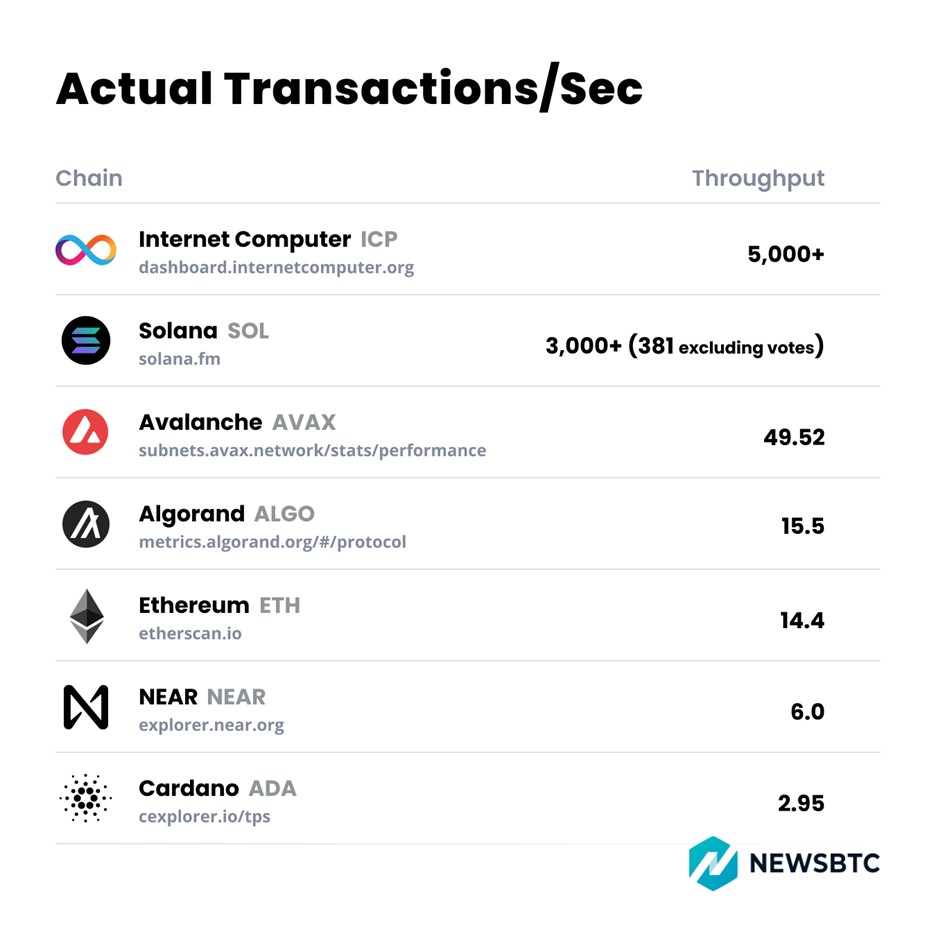
Throughput is a measure that captures the scalability of a community — the power of a blockchain to put in writing knowledge and replace state for thousands and thousands and billions of internet customers and Web of Issues (IoT) gadgets. To be able to supply a ample person enjoy for mainstream web customers, a blockchain wishes so to procedure 1000’s of transactions in step with 2d. Best Solana and the Web Pc display precise transaction speeds that accomplish this feat, even though maximum of Solana’s transactions are vote transactions through validators. Vote transactions don’t exist on different chains; the SolanaFM explorer places Solana’s true TPS at about 381. Different chains both haven’t generated the site visitors required to display top throughput or are technically incapable of attaining top throughput.
Finality
Finality refers back to the reasonable period of time that passes between the proposal of a brand new legitimate block containing transactions till the block has been finalized and its content material is assured not to be reversed or changed. (For some blockchains, like Bitcoin, figuring out the instant of finality can simplest be probabilistic.) This metric additionally impacts the person enjoy, as customers are not likely to make use of programs that require various seconds to finish an operation.

Transaction Prices
Blockchain has its roots as a economic product that may give a lot decrease transaction prices than conventional finance, and that may execute transactions quicker. Top transaction prices have formed the best way we use the web and monetize content material. Because of those prices, content material creators and programs have a tendency to favor higher transaction worth fashions, akin to subscriptions or bulk purchases of content material. Transaction prices are generally correlated by hook or by crook to the price in their related community tokens, so the next values are present as of writing throughout the week of Nov. 14, 2022.
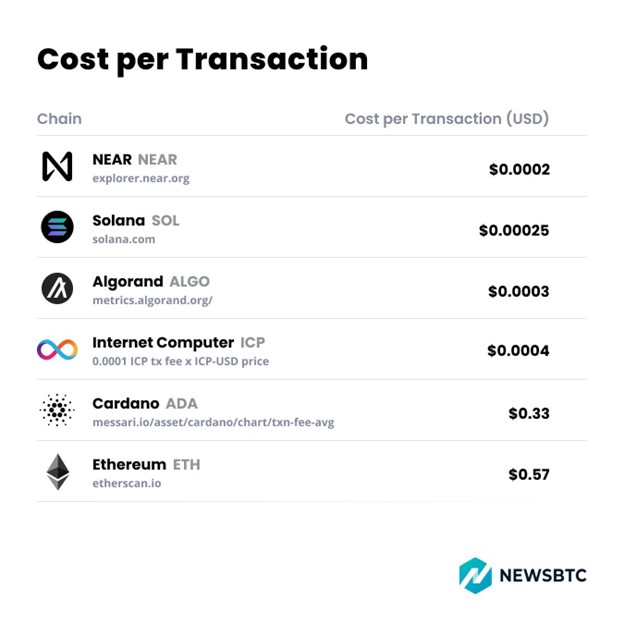
Inexpensive transaction prices can strengthen the improvement of latest income fashions for internet sites and programs, akin to micro-transaction fashions like tipping. For some of these fashions to emerge, the transaction prices of the blockchain will have to be a fragment of the anticipated reasonable transaction worth.
Power Potency
Industries around the globe are operating on turning into extra sustainable within the face of local weather alternate. Power potency has additionally turn out to be a significant house of center of attention throughout the crypto sector, the place it will also be seen as a measure of a blockchain’s talent to execute and, through extension, scale.
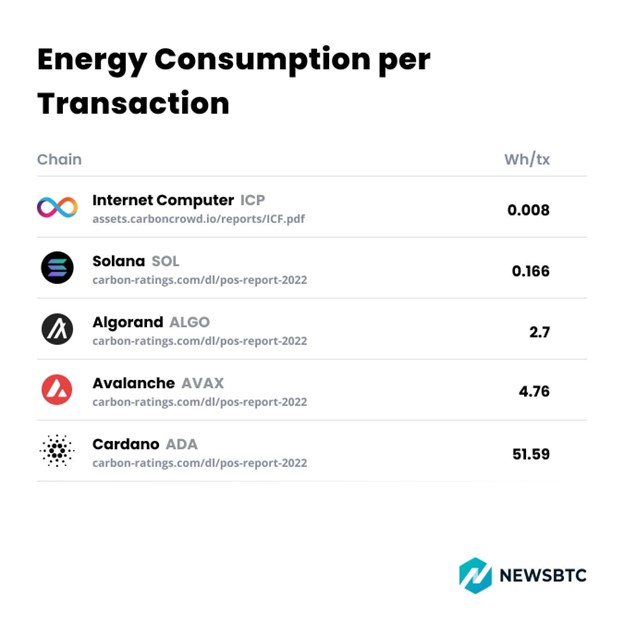
Making improvements to the potency of a blockchain now not simplest decreases the carbon footprint of the era stack, but additionally reduces the power prices related to the protocol. Networks which can be extra power environment friendly, and the programs which can be constructed on height of them, could have a bonus in an an increasing number of aggressive marketplace.
On-Chain Garage Value
On-chain garage has been a continual problem for blockchains, which typically have problem scaling to satisfy the calls for of consumer-facing programs that require considerable knowledge webhosting. This has compelled many builders to depend on Web2 intermediaries for garage and frontends, compromising safety, resilience, and decentralization.
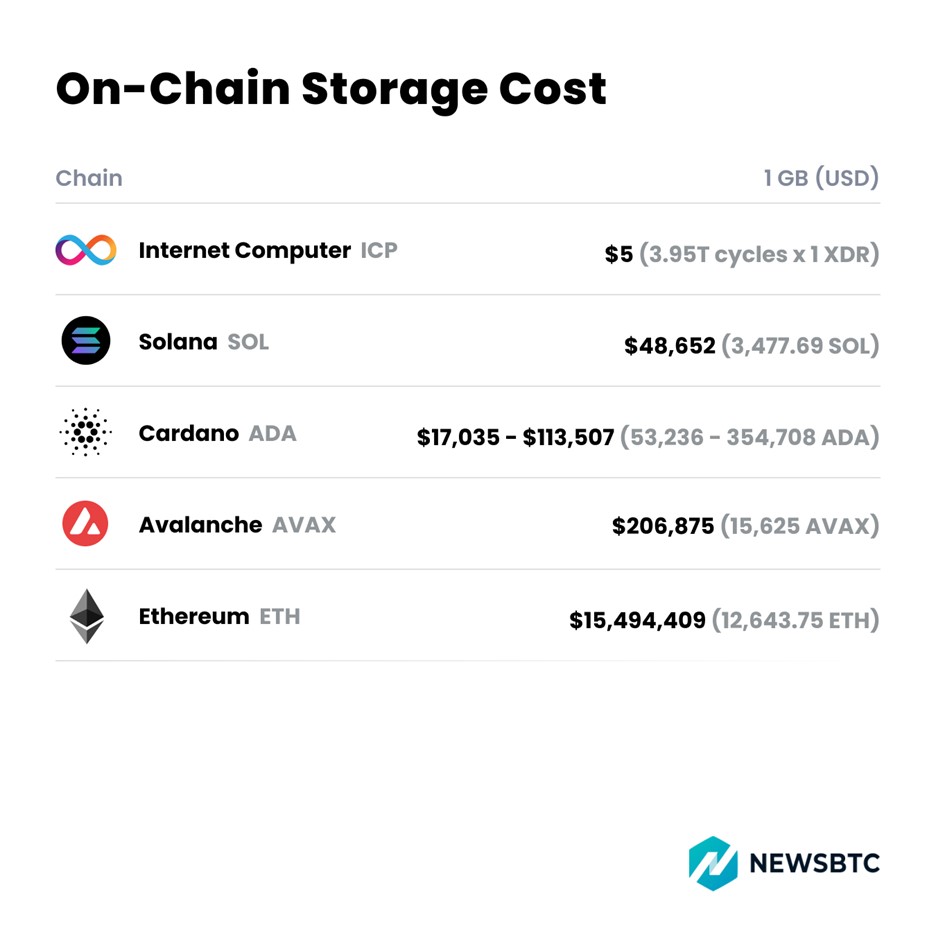
The Web Pc was once discovered to have the bottom and maximum solid price for on-chain knowledge garage amongst top-performing L1’s. “Fuel” takes the type of “cycles,” with 1 trillion cycles pegged to at least one XDR (similar to $1.31 at time of writing). Builders convert ICP into cycles to pay for knowledge utilization, with 1 GB per 30 days requiring 329B cycles equaling $0.423 — equating to $5.07 in step with GB in step with yr.
The price of knowledge garage on L1 protocols generally fluctuates with the price in their related community token, with the expense going up together with the token’s worth and vice versa. Solana’s hire in step with byte-year is 0.00000348 SOL at time of writing, which comes to three,477.69 SOL hire in step with GB in step with yr. At SOL’s present worth of $13.99, this equals a price of $48,652.
Cardano can’t recently retailer non-financial knowledge akin to media recordsdata, and retail outlets all transactions completely. For simplicity, we skip the computational price related to processing the transaction. At a value of $0.32 at time of writing, the price of storing 1GB of transactions will depend on the scale of every transaction, with 2 million transactions of 500 bytes every leading to 354,708 ADA ($113,506.56), and 62,500 transactions of 16 KB every equaling 53,236.08 ADA ($17,035.54) representing the bottom fee-per-byte.
Avalanche has a fuel worth of about 25 NanoAVAX, with 32 bytes fetching more or less 0.0005 AVAX. For simplicity, we skip the fuel prices of sensible contract code execution and of allocating the garage and as a substitute simplest believe the naked minimal price of SSTORE operations. This makes storing 1GB of knowledge price about 15,625 AVAX. AVAX is $13.24 at time of writing, which involves $206,875.
Ethereum’s congestion and top price has impressed the frenzy towards on-chain potency, and it nonetheless units the expense bar. For simplicity, we skip the fuel prices of sensible contract code execution and of allocating the garage and as a substitute simplest believe the naked minimal price of SSTORE operations. The community consumes 20Ok fuel gadgets to accomplish SSTORE operation on 32 bytes of knowledge. Via extension, it prices 625B fuel gadgets for 1 GB of knowledge. With the average gas cost of 20.23 Gwei on the time of writing, that involves 12.64375T Gwei, or 12,643.75 ETH. With ETH at $1,225.46 on the time of writing, this equals $15,494,409.
Conclusion
Because the blockchain trade evolves right into a next-generation era stack able to reopening the shopper web, just a handful of platforms have the technical specs essential to give you the person studies anticipated from nearly all of the web’s customers.
Most sensible-performing layer-1 networks will permit the improvement of programs and products and services that aren’t imaginable, together with innovative capability within the spaces of safety, micro-transactions, and decentralized possession of knowledge and programs.




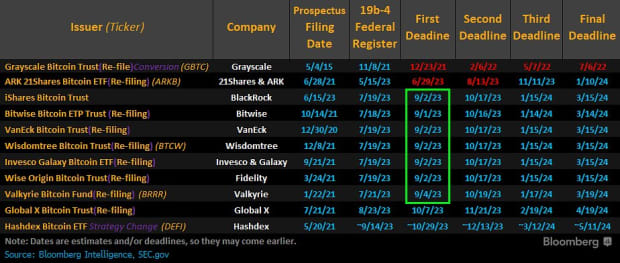
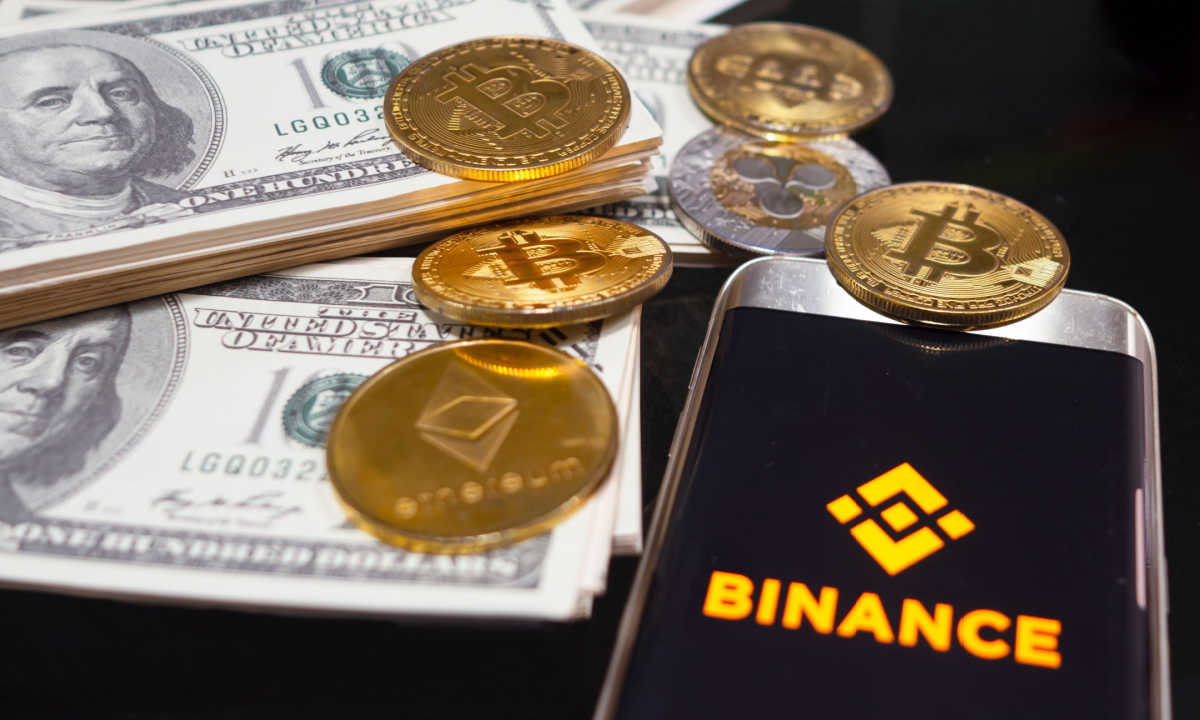



![Methods to Purchase DeFi Pulse Index on CoinStats [The Ultimate Guide 2022]](https://bitrrency.com/wp-content/uploads/2022/05/DeFi_Pulse_og-100x70.png)

